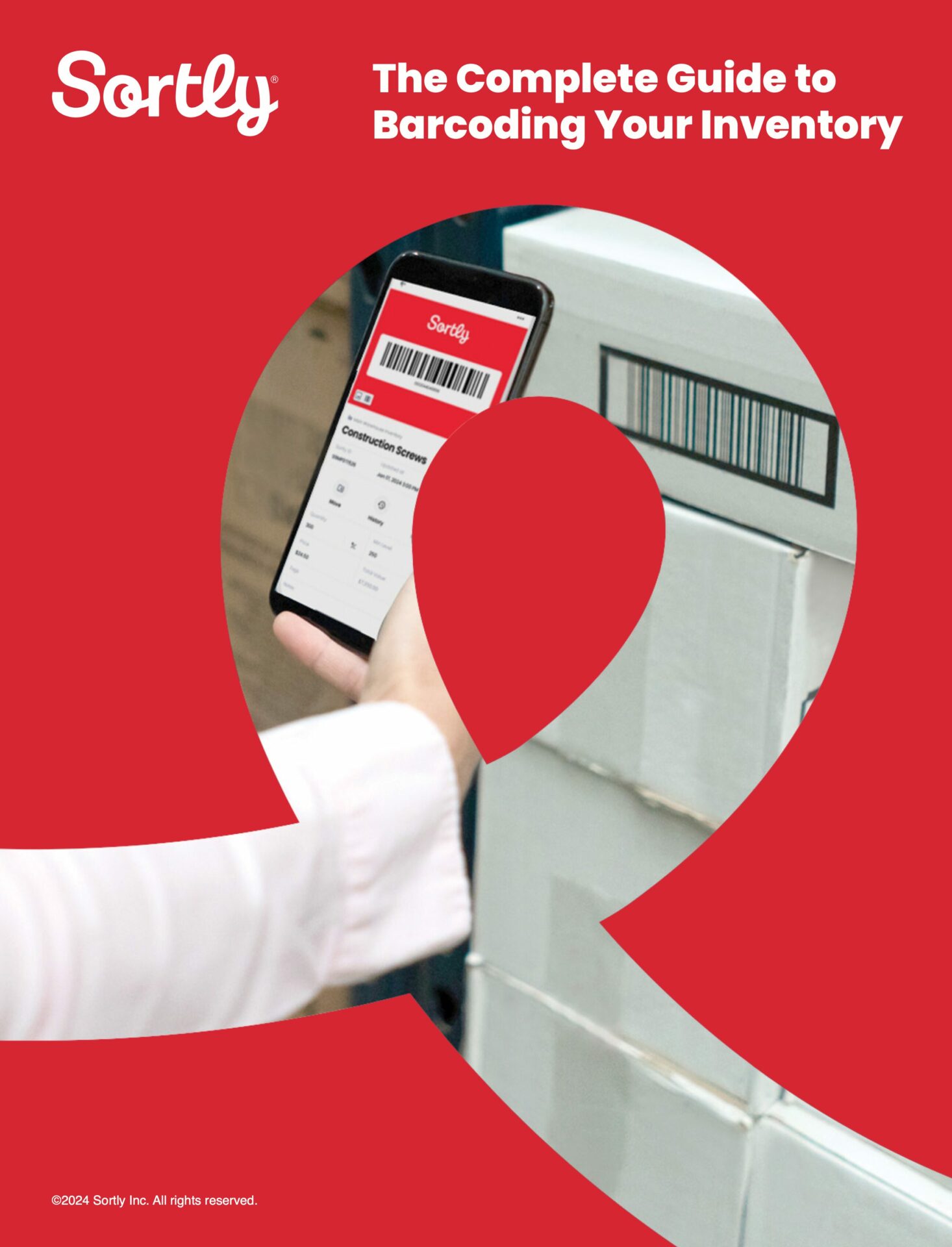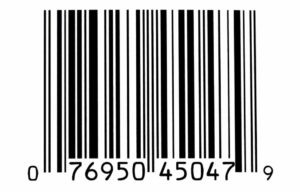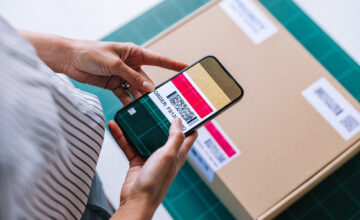If your businesses use barcodes to organize, track, and manage inventory, then you’re probably already using a UPC barcode. But what is a UPC barcode? And what is the difference between an SKU and a UPC? We’ll answer all those questions and more in this article all about UPCs. Then, we’ll explain the benefits of a UPC barcode printer and detail how you can quickly generate and print barcodes—no special equipment required.
What is a UPC barcode?
Here’s a little bit more about the two components of a UPC:
The barcode
A UPC barcode is a unique series of black and white vertical lines. Together, they create a visual representation of the GTIN-12 number associated with a given product. The barcode is one of the two essential parts of a UPC.
This barcode can be scanned by barcode scanners, smartphones, and tablets provided they use an app that scans barcodes.
GTIN-12 number
GTIN is an abbreviation for Global Trade Identification Number. Unlike an SKU (more on that in a moment), a GTIN is internationally recognized. To get a GTIN, you’ll have to pay to license your product with GS1 (the Global Standards Organization), the only organization that assigns them.
There are many alternatives to GTINs, including SKUs, serial numbers, and IDs issued by inventory management systems. Sortly, for example, issues a SID number (a Sortly ID) every time a user adds a new item to their inventory. But only GTINs are truly universal.

Free Ebook: The Complete Guide to Barcoding Your Inventory
This easy, comprehensive guide will help you:
- Implement a barcode inventory system for your business
- Generate your own unique barcodes
- Practice perpetual inventory control with barcoding
SKUs, UPCs, G1 Barcodes… What’s the difference?
You may have encountered terms like SKU, UPC, and G1 barcodes while organizing your inventory. Here’s what you need to know about these terms.
SKU vs. UPC
You’ve probably heard of an SKU—a unique, alphanumeric code that’s connected to an item in your inventory. Typically an SKU (or a stock keeping unit) contains eight digits or numbers that are meaningful and descriptive to people within your organization. That’s because your business will designate numbers, letters, or abbreviations that represent a product’s category, location, season, color, and so much more.
SKUs are often used alongside barcodes to make inventory management easier and less error-prone.
The critical difference between an SKU barcode and a UPC barcode is that a UPC barcode is truly universal, thanks to that 12-digit GTIN code.
Still, your business can create a robust, fully automated barcode inventory system using SKUs, Sortly IDs, or something similar.
GS1 barcode vs. UPC
If you’ve been wondering about the difference between a GS1 barcode and a UPC, there really isn’t one. If you’re using a tree UPC, then it must have a GS1-issued GTIN, of which the barcode is simply a visual representation.
UPC vs. barcode
Finally, all UPCs have barcodes, but not all barcodes must be UPCs. You can link a barcode to any unique code, like a Sortly ID, an SKU, or anything similar. Remember, while many businesses might use barcodes, those barcodes are only UPCs if they’re linked to a GTIN.
How UPC barcodes look
You already know that a UPC barcode has two components: a black and white barcode and a GTIN. When a UPC barcode is printed and affixed to a product, it will feature both the barcode and GTIN, placed just below the barcode.
Remember that the black and white parallel bars that make up the barcode aren’t random, either. Instead, they’re intentionally thick or thin to represent a number between 0 and 9.

If you are creating custom barcodes using an inventory app, you’ll still be able to print those barcodes and an SKU, Sortly ID, or some other kind of unique code as an alternative to a UPC barcode.
Benefits to a UPC barcode system
If you choose to adopt a UPC barcode system at your business, you’ll deal with both positives and negatives. But let’s look at the bright side of using UPC barcodes. Here are a few barcode benefits:
A truly universal identifier
Using a UPC barcode is a tried-and-true way of ensuring other partners in your supply chain can read and understand your barcodes. That’s because a UPC barcode is truly universal, and all barcode readers can identify that GTIN.
Inventory apps like Sortly are also capable of reading UPC barcodes using a smartphone, tablet, or synced external Bluetooth scanner. And better yet, you can scan UPC barcodes when adding new inventory to your dashboard. Many details (and sometimes even photos) will automatically be added to an item profile.
Faster check-in and check-out
Since UPC barcodes are truly universal, they don’t need to be registered in your inventory system to be scanned and understood. That’s helpful if you need to accept large deliveries from suppliers at your warehouse or storage facility.
All you need to do is scan these UPCs with any inventory management system, and you’ll know what you’re scanning. You can also sync UPCs with your inventory using an app like Sortly, so you can add details like location, inventory minimum, and handling instructions.
Less room for error
One main selling point of modern, automated inventory systems? Reducing human error. And UPC barcodes are undoubtedly helpful at doing just that.
While all barcodes and QR codes can help reduce human error, UPC codes can be especially helpful. That’s because they’re already set up and registered, further reducing the risk of a mixup.
Related: Barcodes vs. QR Codes for Inventory Management
How to generate and print UPC barcodes
Generating and printing UPC barcodes isn’t difficult, but it does require you to pay GS1 to license a GTIN. This step is easy—GS1 works with all sorts of companies worldwide and makes the process a piece of cake.
Cost of licensing a GTIN
But getting a GTIN isn’t free. A one-time GTIN is currently $30 in the United States, although there is no fee to maintain the GTIN after that. And if your company wants to register many products, you can license a company prefix. This company prefix will help you create GTINs for anywhere from 10 to 100,000 items. This license starts at $250 but could be as high as $10,500.
Lower-cost alternatives to UPC barcodes
If your business doesn’t want to spend money on GTINs, there are other barcoding alternatives. For example, inventory management software like Sortly allows you to generate custom barcodes (and QR codes) for your inventory. You can assign an SKU to inventory, although a serial number has likely been assigned automatically.
Once you’ve generated barcodes (or QR codes) for your inventory, you can print them and affix them to your inventory. Apps like Sortly make it even easier because you can use a regular printer and standard labels from popular brands like Avery.
Related: Generating and Scanning QR Codes in Sortly
Experience the simplest inventory management software.
Are you ready to transform how your business does inventory?
About Sortly
Sortly helps you track, manage, and organize all your inventory—from any device, in any location. We’re an easy-to-use inventory solution that’s perfect for small businesses. Sortly builds inventory tracking seamlessly into your workday so you can save time and money, satisfy your customers, and help your business succeed.
With Sortly, you can track consumable inventory like supplies, parts, and raw materials, assets like equipment and machinery, and anything else that matters to your business. It comes equipped with smart features like barcoding & QR coding, low stock alerts, customizable inventory folders, smart reporting, and much more. Best of all, you can update inventory right from your smartphone—and so can your team.
Whether you’re just getting started with inventory management or you’re an expert looking for a more efficient solution, we can transform how your company manages inventory—so you can focus on building your small business. That’s why over 15,000 businesses globally trust us as their inventory management solution.
Start your two-week free trial of Sortly today.




